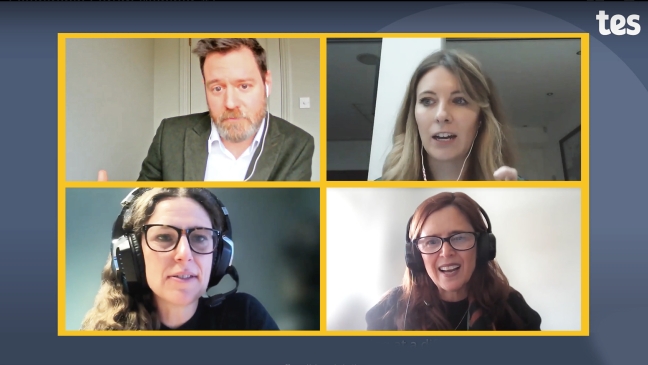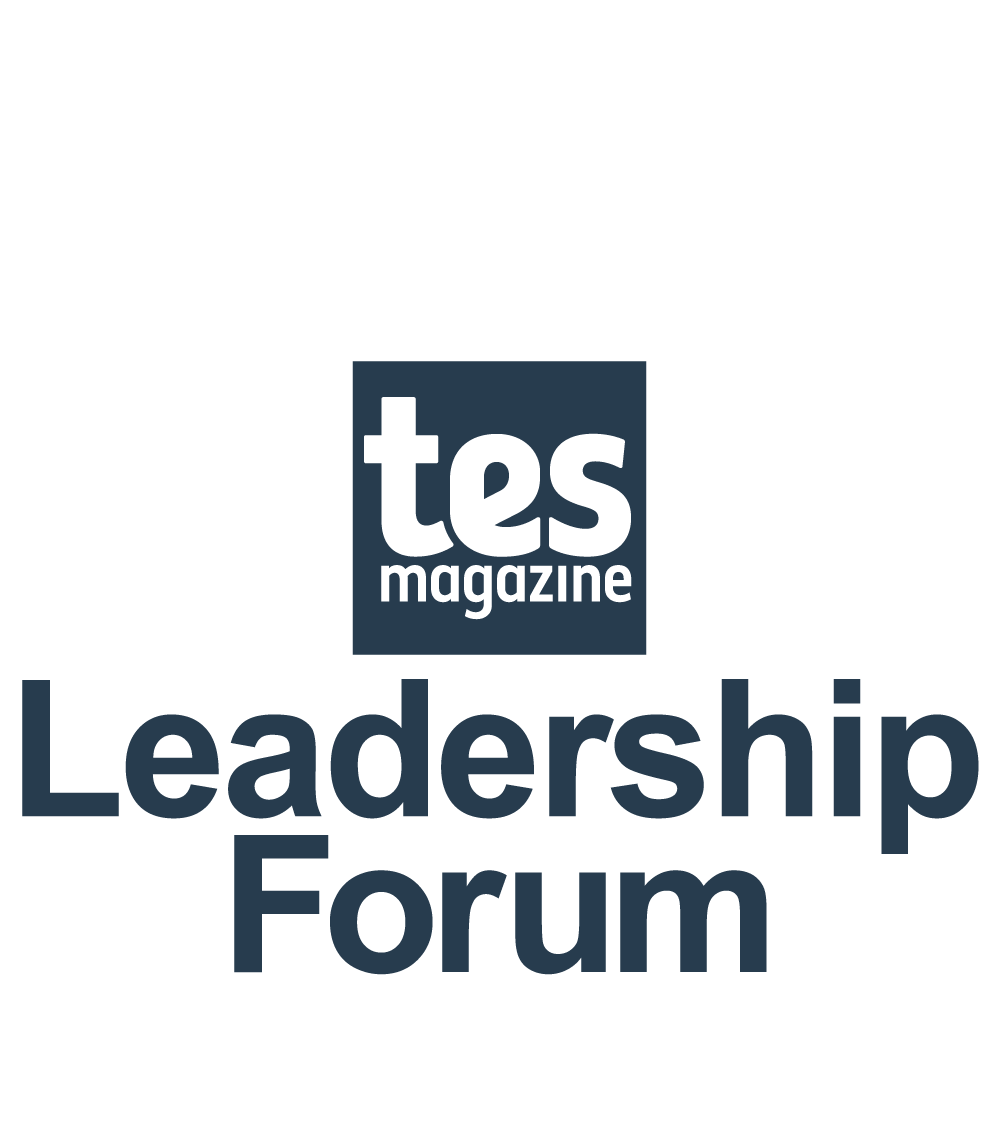- Home
- Leadership
- Strategy
- How should we lead on whole-school literacy?
How should we lead on whole-school literacy?

Literacy underpins all the work that goes on in schools. Without skill in this area, young people will struggle to access the curriculum and are more likely to go on to achieve less highly and have more limited life prospects.
It’s no surprise, then, that whole-school literacy is a top priority on many school improvement plans.
But what is the best way to lead on literacy? How can schools and multi-academy trusts (MATs) develop their provision to deliver the best results while making sure that their model is sustainable and scalable?
These aren’t easy questions to answer, says Unity Jones, director of insights and innovation at Academies Enterprise Trust (AET).
“We really should see reading as a fundamental entitlement for every child, but we know it’s such a difficult area to develop in our schools,” she explains in the latest Tes Magazine Leadership Forum webinar.
To help schools and trusts make sense of how best to approach this complex topic, we gathered some experts for a roundtable discussion.
Joining Tes’ teaching and learning editor Helen Amass are:
- Estelle Bellamy, English lead at Fylde Coast Academy Trust.
- Martin Henson, associate schools leader at REAch2 Academy Trust.
- Unity Jones, director of insights and innovation at AET.
- Professor Jessie Ricketts, director of the Language and Reading Acquisition Lab at Royal Holloway, University of London.
You can watch the webinar and read a summary of the discussion below. If you can’t see the video, you can also watch it here.
A good place to start in developing your whole-school literacy strategy is to conduct an audit of the provision you already have in place, says Bellamy.
“That’s so important because nobody is starting from zero; everybody will be doing something that’s working well and if you can celebrate that as a starting point, that’s absolutely what I would do,” she says.
There are, she adds, a number of existing tools that can help schools here, including the Department for Education’s reading framework, which contains audit materials for school leaders and teachers.
It’s important to remember, though, that “every school is different”, Bellamy continues. So, while universal audit tools are a good place to start, when it comes to identifying solutions, schools need to make sure that they are really considering what is right for their context, their children and their situations, rather than taking a blanket approach.
“See what’s working well, build on that and then start closing the gaps - a bit like we do with marking a piece of children’s work,” Bellamy advises.
Jones agrees with this. Her trust, AET, runs 57 schools in what she calls “very different parts of the country” - in areas as far apart as Birmingham, London, Torquay, Middlesbrough and the Isle of Wight.
She stresses that “it’s really important that each school develops their own approach” while recognising the need to ensure consistency in the quality of provision across the trust.
In an attempt to get this balance right, AET has established a network of “reading leaders”. These are designated literacy specialists within each school who come together once every half term to take part in professional development and to share “what is and isn’t working in each of their schools”, with a view to collaboratively reach solutions, Jones explains.
Collaboration between staff is also a crucial part of the strategy at REAch2, says Henson. He believes this is essential both to secure buy-in and to make sure that there is a shared understanding of what makes effective literacy teaching.
“What might actually be happening in the lesson might be very different between two of our schools, but we still need a good understanding of whether or not that practice is effective,” he says.
It’s important that staff have the chance to listen to colleagues who might be doing things differently. But, Henson adds, schools should also be asking pupils what’s working well and what isn’t - and reflecting on this feedback, too.

In recent years, he says, his trust - which is the UK’s only primary-only MAT - has been doing more work around pupil voice, and using this to inform their approach to literacy.
“I think, historically, we’ve been very good at looking at planning and looking at books. And I think more recently, we’ve gotten a lot better at talking to children and listening to children,” says Henson.
This is particularly important when you think about the reading culture of a school, he says, adding: “You can’t understand the culture without talking to the people, and people in the culture are the children.”
Reading culture vs reading skills
Establishing a reading culture is, Bellamy says, perhaps the most challenging part of this work for many schools.
“It’s a very simple distinction, but to me, there’s a whole strategy around the practical development of reading, and then there’s culture, and that’s the hardest one to get right.”
Part of the problem, she adds, is that reading culture is not an easy thing to measure.
“It’s difficult to necessarily see how far you’ve come; you can sometimes feel it rather than measure it, and it’s a minefield.”
So, how can leaders understand if their school is on the right track when it comes to reading culture? According to Henson, there are two things to consider to determine whether you have a “Reading School, with a capital ‘R’”.
The first is to look for visible evidence of reading culture around the school.
“The most obvious thing here is: can we see the books? Where are the books? What’s the profile of the books in this building? How much are they celebrated? Can we see children reading? Can we see where the children have spaces to read and spaces to enjoy reading and relaxing?”
The second helpful thing, he continues, is to get staff together to “self-evaluate” and “interrogate” the subconscious messages they might be sending to children about reading.
Adults working in schools will read often during the day, so it’s important to consider how they approach that reading, he says.
“Do they demonstrate their love of reading every time they pick up a book and every time they read something to the children? Or do they only do that some of the time, or do they only do that if it’s a book that they like and they haven’t taught 500 times?”
It’s “absolutely crucial” that these conversations happen, though this requires staff to be open and honest with one another, which isn’t always easy, Henson adds.
“Each of us as individuals within school [has to ask ourselves] ‘how do we personally prioritise reading?’ and ‘do the things that we say match with the actions that we take and the way we demonstrate that to the children?’”

This shouldn’t just be up to individual teachers to consider, though; as Bellamy makes clear, without the right leadership, efforts to grow reading culture will always fall flat.
“If you haven’t got buy-in at the top, then you’re never going to make that shift in the cultural significance of reading,” she says.
And there’s another critical thing to bear in mind when considering reading culture. As Ricketts points out, that culture can’t exist without schools first establishing reading proficiency.
“What the research shows really clearly is that if we want children to enter into that culture and engage with it, they need to have the knowledge and skills first, because otherwise they can’t be successful readers. And at the beginning, success is the thing that feeds into all of the other wonderful cultural things around reading and then reading lots and gaining pleasure from reading,” she says.
“You have to be able to read first and we know that in primary and in secondary, there’s still quite a lot of children that, no matter what wonderful environment you create for them, won’t be able to access it.”
Focused intervention
In a bid to make sure that children and young people have the skills they need, AET has introduced reading assessments for every pupil, says Jones. These are carried out at two points in the year: in the autumn and summer terms.
“We come from a place of being really data informed,” she explains. “By doing those assessments, it enables teachers to focus on specific areas. So you can understand, do we have a challenge here in vocab or fluency or comprehension? And then we can target those areas both through whole-school approaches and one-to-one interventions.”
Ricketts agrees that any support needs to be targeted, because literacy encompasses so many different skills. Often, she says, schools try to achieve too much in one go, or to tackle several different problems at once, which can be counterproductive.
Instead, she suggests, it might be better for schools to “focus in”.
“If we’re going to put something in place, we need to be really careful about what the goals are of that particular strategy or approach,” she says.
For Henson, this is sound advice. He agrees that it is good to be “really focused on how you’re going to improve practice in a particular area”. But, he adds, it’s also important to understand “how that area fits into the overall goal of literate children that can read and write and enjoy those things”.
Literacy is a complex area of the curriculum with a lot of moving parts, and one of the “classic pitfalls” Henson sees is schools “not having a good idea of the whole”.
“It’s very easy to focus on phonics, it’s very easy to focus on writing, it’s very easy to focus on love of reading,” he says, “but we don’t always take enough time to step back and think about how all of those things fit together, and what the journey is for the child from when they join us perhaps in nursery all the way through to when they leave us to go to key stage 3.”
There’s an obvious training need here when it comes to making sure that teachers - and leaders themselves - have the holistic understanding that will allow them to take the big picture view of literacy, Bellamy points out.
“I am a bit embarrassed to say that, as a secondary teacher of English, I only discovered phonics eight or nine years ago,” she says. “And now it’s absolutely essential that all English teachers are trained in that sort of early reading, and that teachers of other subjects have an understanding of etymology, morphology, vocabulary that will enable them to teach their subjects better. So there’s a huge training need.”
The prospect of upskilling all staff in this area might seem daunting, but, Bellamy points out, it can be achieved through a combination of whole-school sessions that all staff take part in, specialist CPD for reading intervention leads and more “bespoke” approaches that teachers can dip in and out of.
And once you start expanding your professional development, you might be surprised at how quickly staff come into their own, she adds.
“One thing that has been absolutely magical is that we’ve discovered some teachers of maths and science who are just amazing teachers of reading. Ten years ago, we wouldn’t have known that,” Bellamy says.
“There are some marvellous hidden talents in our schools around this - and thank goodness we discovered it.”
You need a Tes subscription to read this article
Subscribe now to read this article and get other subscriber-only content:
- Unlimited access to all Tes magazine content
- Exclusive subscriber-only stories
- Award-winning email newsletters
Already a subscriber? Log in
You need a subscription to read this article
Subscribe now to read this article and get other subscriber-only content, including:
- Unlimited access to all Tes magazine content
- Exclusive subscriber-only stories
- Award-winning email newsletters
topics in this article




